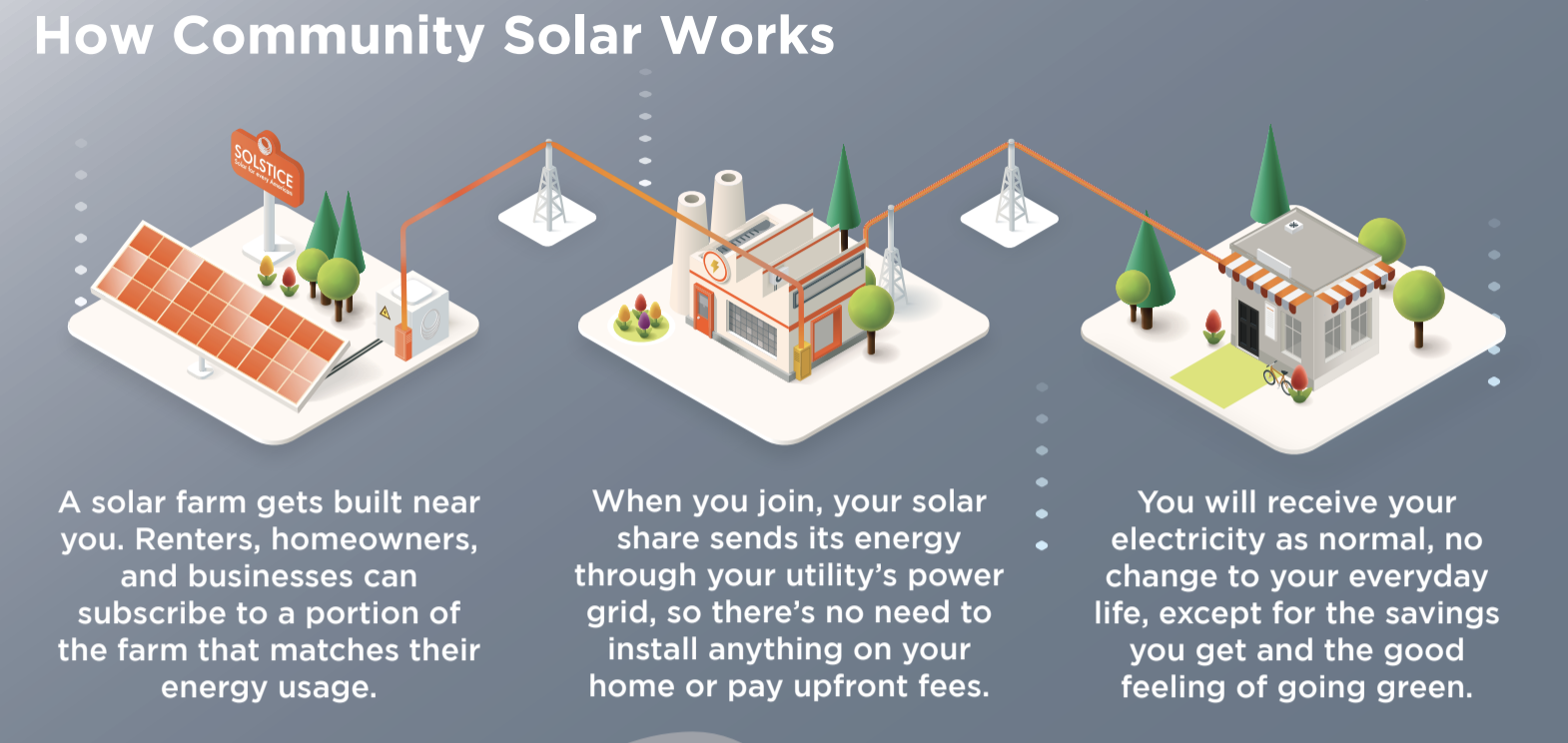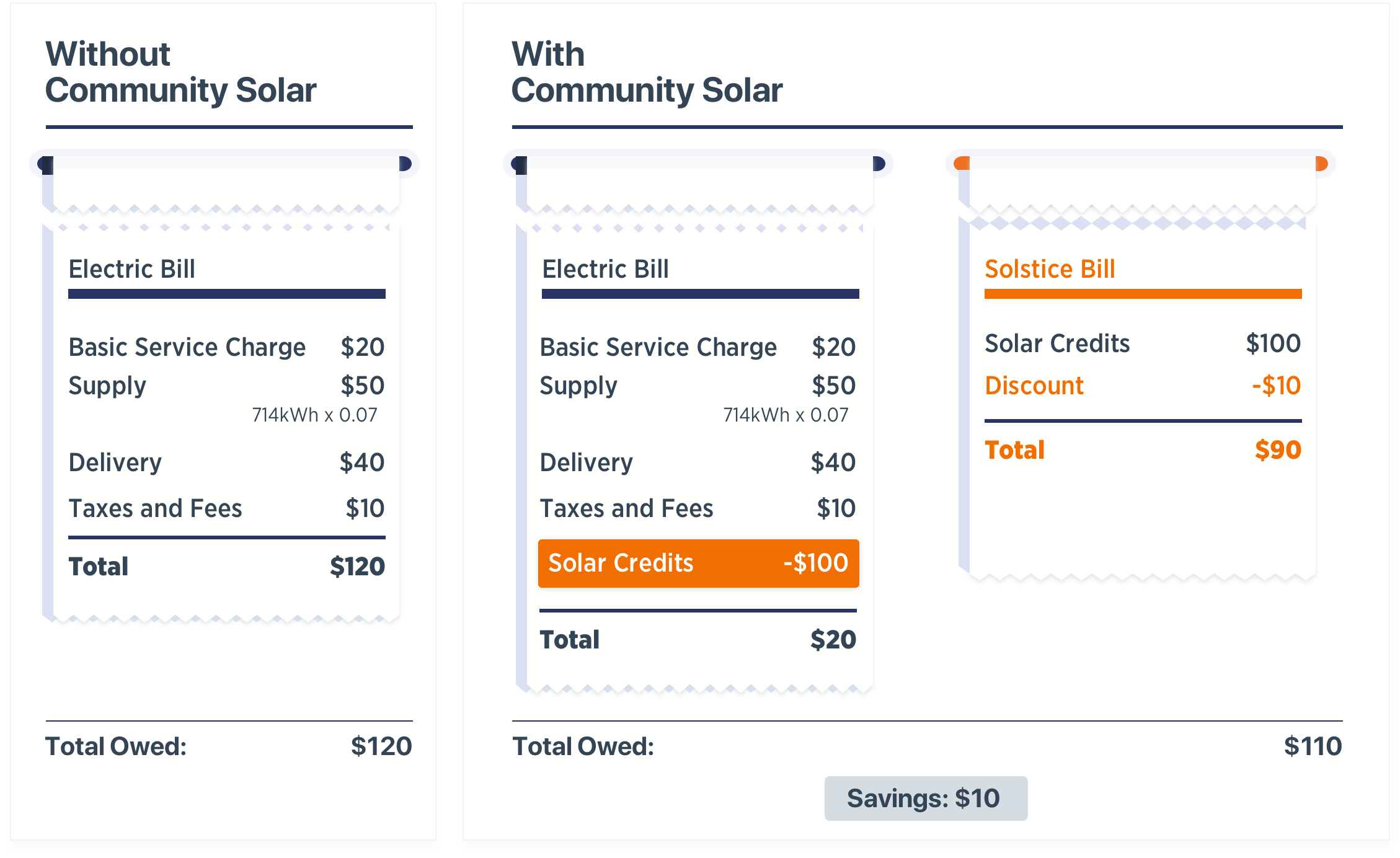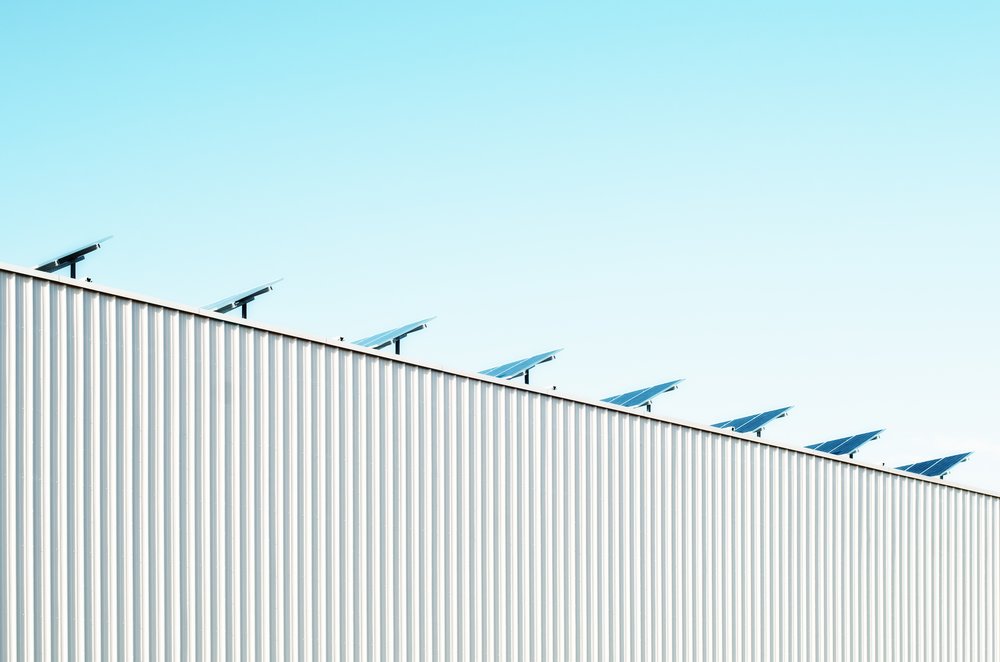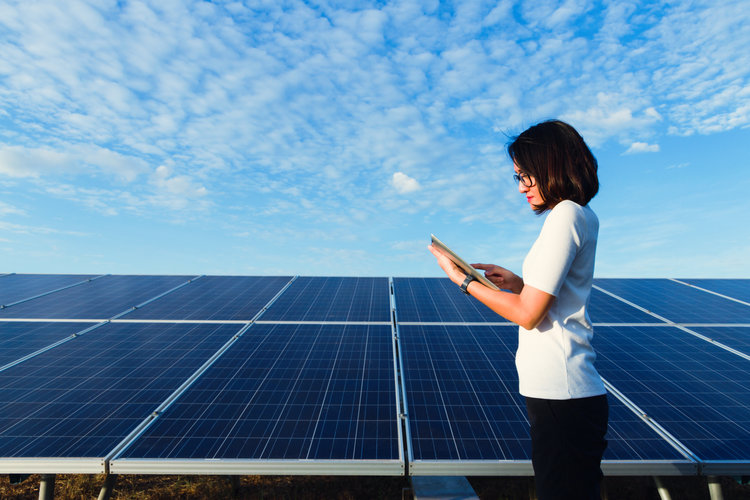Although Community Solar is getting more mainstream, it can be a tricky concept to grasp — especially if you’re not used to the idea of choosing where your energy comes from! Here, we answer all your Community Solar FAQs.
Community Solar can be a real head-scratcher, especially if you haven’t heard of it before. Many folks don’t realize that they have a say in where their energy comes from, or that they can choose to source from renewable energy projects in their community. We put together a list of Community Solar FAQs we get asked every day, from “What is Community Solar?” to “If I’m not paying upfront fees, who is paying?”
Table of Contents
What is Community Solar, and how is it different from rooftop solar?
We’re glad you asked! With Community Solar, solar arrays are installed in a centralized location where local residents (like you!) and businesses can enroll at no additional costs. Think of it as a community garden, but for solar power. Unlike rooftop solar, Community Solar gives you the benefits of solar energy without the hassle or upfront cost of installing panels on your roof.
With rooftop solar, you pay for the solar panels and installation cost, which on average amounts to roughly $12,000 after federal tax incentives (with plenty of room to be larger depending on the geography and energy needs of your home). However, because their solar panels cover all of their electricity needs, rooftop solar owners typically break even on their investment within eight years of installation and receive a 10-30% ROI. Alternatively, Community Solar subscribers can sign up at no cost, and in most cases, cancel without paying a fee.
Cool! So how does it work?
Community Solar gardens are solar arrays, usually built by developers on unused land. But developers can’t build these gardens without willing customers who sign up to support them. Your household can subscribe to a portion of a nearby shared solar garden without switching utilities, and see consistent savings on its electric bill.

Using your utility bill as a reference, we match your electricity usage to a share of a solar farm that will offset your annual energy use. Your allotted solar panels create electricity every day and feed that power into the grid. You then pay for that power, but at a discounted rate; typically, customers can expect to see an estimated 10% savings on their bills.
According to the U.S. Energy Information Administration, the average electric bill across all 50 states in 2019 was $115. While bills vary significantly by state and household, this data shows the average American saving 10 percent on electricity would earn about $11.50 per month or $138 in their first year as a community solar subscriber.

Why do I get a second bill?
As a solar subscriber, Solstice will send you an invoice each month charging you for your solar credits at a discount, as laid out in the details of your local Community Solar program.
Using the sample bill above as an example, Community Solar gives customers a set discount rate (usually 10%) on their monthly utility bills.* In this case, if your electric bill is $25 and your bill is offset by your share of the solar farm, then you’ll get $25 in credits on your utility bill from your solar panels.
You’ll receive a $0 bill from your utility. Separately, you’ll get a $90 bill from Solstice, reflecting the 10% discount applied to the cost of your solar credits.
* It’s worth noting that the bill above is an example bill for a Community Solar program that offers folks 10% savings on solar credits that cover their entire bill (both the supply and distribution portions). Some of Solstice’s projects offer discounts on the supply portion of your electric bill—in this case, the discount is typically 20%, resulting in very similar overall savings to a 10% discount on the entire bill.
Where are Community Solar farms located?
Many Community Solar installations are built on capped landfills, open fields, or the roofs of warehouses, supplying energy to the electricity grid and allowing nearby residents to finally take part in the solar revolution. If you see a small solar installation near you, you might actually be able to get a share of it for yourself! Check out our comprehensive map of U.S. Community Solar.
Solstice has worked on 36 projects (10 available, 26 full) in Massachusetts, New York, and Illinois.
What happens if I cancel?
We’re always sad to see customers go, but we do not charge cancellation fees as long as you give us a little advance notice. If you cancel because you’re moving, you might even be able to keep your subscription if you’re moving within your utility’s service territory! If you’re moving outside your utility area, you again won’t be charged as long as you give us a couple of months to replace your account. We hope you’re able to find a Community Solar program near your new home!
Why can’t I save more?
With Community Solar, you earn modest savings (typically around 10%) on your electric bill each month. While it might not seem like much, it really adds up! Sometimes, though, subscribers still want to know why they can’t save more each month. The answer is that, in order to provide affordable clean energy at no upfront cost and with no recurring subscription fees, we must reduce the monthly savings we offer (while still giving as much of the financial benefit to our subscribers as possible). This allows money to flow evenly so that subscribers benefit and we can afford to offer more projects.
If your goal is for solar to cover 100% of your electricity bill, you should look into rooftop solar. Through rooftop solar, you can maximize your long-term savings, albeit that it requires installation fees. When it comes to installing your own solar, the more you can pay upfront for an installation, the more you’ll be able to earn down the line. Installing your own panels is great if you can do it! But the truth is, most of us can’t. Either we’re unable to pay the upfront cost, rent our homes, live in an apartment, or perhaps have roofs that are simply facing the wrong way.
Solstice’s mission is to make going solar so easy and so affordable that anyone can do it, which means eliminating these barriers to participation, including any upfront costs of joining. And while a typical household’s savings may be relatively modest each month, those savings come with no strings attached or extra investment.
How does Solstice make money?
A solar developer is in charge of building and maintaining the Community Solar project. They partner with Solstice to take care of the acquisition and management of subscribers for the project. The developer pays us for each subscriber (specifically, each new kWh of electricity) we enroll in our Community Solar farm. The developer, in turn, earns its money back through customers’ normal monthly utility payments, which is why there are no extra fees needed to participate!
Why can’t I pay with a check?
Most Community Solar companies (including Solstice) require automatic payment. Automatic payments are a way to eliminate risk and ensure developers that they won’t be losing money, which makes it possible for us to bring clean energy to more communities. All of our subscriber data is kept strictly private, as listed in our Terms and Conditions. Still have questions about payment and data security? We’d love to chat! Click on the orange chatbox on the bottom left of your screen, or click here to schedule a call.
What’s the catch?
We’re proud to get this question, because it means we’re helping to provide a service people didn’t think was possible. And we’re even prouder to answer, “There is no catch! Your Community Solar farm will bring you savings, year after year.”
Community Solar is free to join because you’re not buying your panels. Instead, you’re subscribing to receive credits for the electricity they generate. You don’t need to worry about maintaining, cleaning, or recycling them, nor paying a steep cost to install anything on your property. Our solar developer partners take care of all of that, and you get the credit for supporting local solar energy.
We hope you learned a thing or two from these Community Solar FAQs. We’d love to help you support renewable power in your neighborhood!
Want to join the thousands of households and businesses in supplying clean energy to the grid?
See if there’s a Community Solar farm near you!




